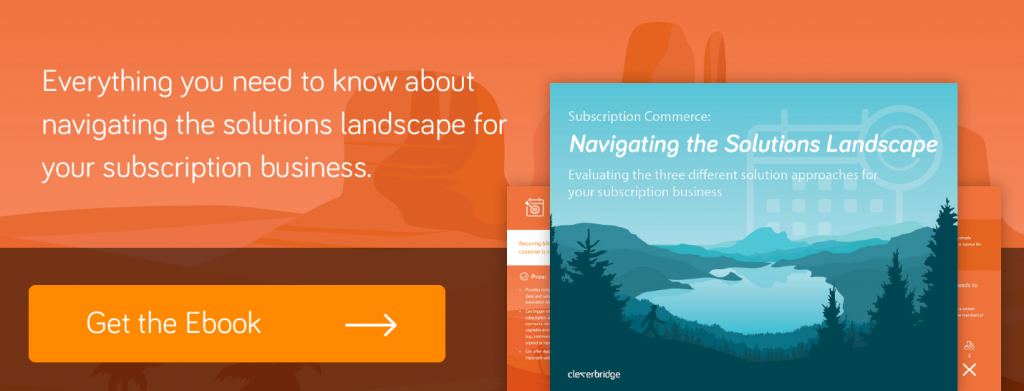This is a follow-up post to our previous discussion of different types of commerce solutions. This post explores subscription management tools, the second type of commerce solutions.
To reiterate: Building a solution on your own takes a lot of planning, development and maintenance. So when you choose to implement a commerce solution, you’ll be looking at three main categories of providers:
- Billing / payment solutions
- Subscription management solutions
- Full-service solutions
The various types of commerce solutions support your ability to offer payments options, manage subscribers, and handle miscellaneous ecommerce capabilities. As you begin researching your options, keep these questions in mind: Are you offering the best possible customer experience to all of your subscribers, no matter where in the world they are? Are you maximizing your renewals for every billing event? Are you able to scale all of these operations and processes as you start to increase your market share?
Much of your success is determined by making the right decisions about building or buying commerce solutions. And the last thing you need is to be locked out of your markets because your systems limit your ability to compete.
Category: Subscription Management Point Solution
Recurring billing and subscription management point solutions focus on the function of managing when each customer is due to be billed and for how much.
Use Case: Subscription Management Point Solution
If you’re going to offer a complex or high volume subscription product, this type of solution offers relatively simple integrations and quick time-to-market. While it requires you to have the resources for building or sourcing other pieces of the ecommerce puzzle, this is a great fit for many companies.
Think, for example, of a newspaper or magazine subscription where the publisher needs to know when a subscription is expiring. The publisher either collects the annual/monthly fee or stops delivering the publication if the customer doesn’t pay by a certain date. A recurring billing platform will manage this information for the publisher, though they won’t necessarily act as the merchant of record and collect payments.
While many subscription commerce/billing platforms are great if you offer a complex or high volume subscription product, or are looking for quick time-to-market, the challenge some companies discover is that most of these solutions only support a fraction of the capabilities that your business might require.
To access all the necessary parts of a fully functional ecommerce ecosystem (payment processing, multivariate testing, localization capabilities, marketing capabilities, fraud prevention, affiliate and reseller support, customer support, etc.), you would have to mix and match several vendors to achieve complete coverage. This also leaves you at the mercy of the quality of connections between your subscription management solution and other third-party vendors.
Keystone
Ultimately, subscription management is only one part of a much larger ecommerce picture. If the subscription management layer is all you are looking for, and your existing systems can handle the integrations, this is a great fit for many companies. However, if that’s not the case, and you don’t have the resources for the development and integrations, a full-service digital commerce solution might be your best bet for reducing the costs of your commerce.
Ryan Greives is the Public Relations Manager at cleverbridge.

